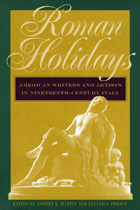2 books about Nineteenth - Century Italy

The Art of the Macchia and the Risorgimento
Representing Culture and Nationalism in Nineteenth-Century Italy
Albert Boime
University of Chicago Press, 1993
During the 1860s and '70s, more than a decade before the development of French Impressionism, Italy produced a group of avant-garde artists whose fervently nationalist paintings anticipated some of Impressionism's theoretical concerns. These artists were called "Macchiaioli" because they based their technique on a quickly rendered macchia, or sketch.
In the first extended sociopolitical interpretation in English of this important group, Albert Boime places the Macchiaioli in the cultural context of the Risorgimento—the political movement that unified Italy, freed from foreign rule, under a secular, constitutional government. Anglo-American art criticism has generally neglected these painters (probably because of their overt political affiliation and nationalist expression), but Boime shows that these artists, while deeply political, nevertheless created aesthetically superior work.
Boime's study departs from previous research on the Macchiaioli by systematically investigating the group's writings, sources, and patronage in relation to the Risogimento. The book also examines both contemporary and later critical responses, revealing how French art criticism has obscured the achievements of Macchiaioli art. Richly illustrated, The Art of the Macchia and the Risorgimento will appeal to anyone interested in nineteenth-century European art or the history of Italy.
In the first extended sociopolitical interpretation in English of this important group, Albert Boime places the Macchiaioli in the cultural context of the Risorgimento—the political movement that unified Italy, freed from foreign rule, under a secular, constitutional government. Anglo-American art criticism has generally neglected these painters (probably because of their overt political affiliation and nationalist expression), but Boime shows that these artists, while deeply political, nevertheless created aesthetically superior work.
Boime's study departs from previous research on the Macchiaioli by systematically investigating the group's writings, sources, and patronage in relation to the Risogimento. The book also examines both contemporary and later critical responses, revealing how French art criticism has obscured the achievements of Macchiaioli art. Richly illustrated, The Art of the Macchia and the Risorgimento will appeal to anyone interested in nineteenth-century European art or the history of Italy.
[more]

Roman Holidays
American Writers and Artists in Nineteenth-Century Italy
Robert K. Martin
University of Iowa Press, 2001
Featuring essays by twelve prominent American literature scholars, Roman Holidaysexplores the tradition of American travel to Italy and makes a significant contribution to the understanding of nineteenth-century American encounters with Italian culture and, more specifically, with Rome.
The increase in American travel to Italy during the nineteenth century was partly a product of improved conditions of travel. As suggested in the title, Italy served nineteenth-century writers and artists as a kind of laboratory site for encountering Others and “other” kinds of experience. No doubt Italy offered a place of holiday—a momentary escape from the familiar—but the journey to Rome, a place urging upon the visitor a new and more complex sense of history, also forced a reexamination of oneself and one's identity. Writers and artists found their religious, political, and sexual assumptions challenged.
Nathaniel Hawthorne's The Marble Faun has a prominent place in this collection: as Henry James commented in his study of Hawthorne, the book was “part of the intellectual equipment of the Anglo-Saxon visitor to Rome.” The essayists also examine works by James, Fuller, Melville, Douglass, Howells, and other writers as well as such sculptors as Hiram Powers, William Wetmore Story, and Harriet Hosmer.
Bringing contemporary concerns about gender, race, and class to bear upon nineteenth-century texts, Roman Holidays is an especially timely contribution to nineteenth-century American studies.
[more]
READERS
Browse our collection.
PUBLISHERS
See BiblioVault's publisher services.
STUDENT SERVICES
Files for college accessibility offices.
UChicago Accessibility Resources
home | accessibility | search | about | contact us
BiblioVault ® 2001 - 2024
The University of Chicago Press









